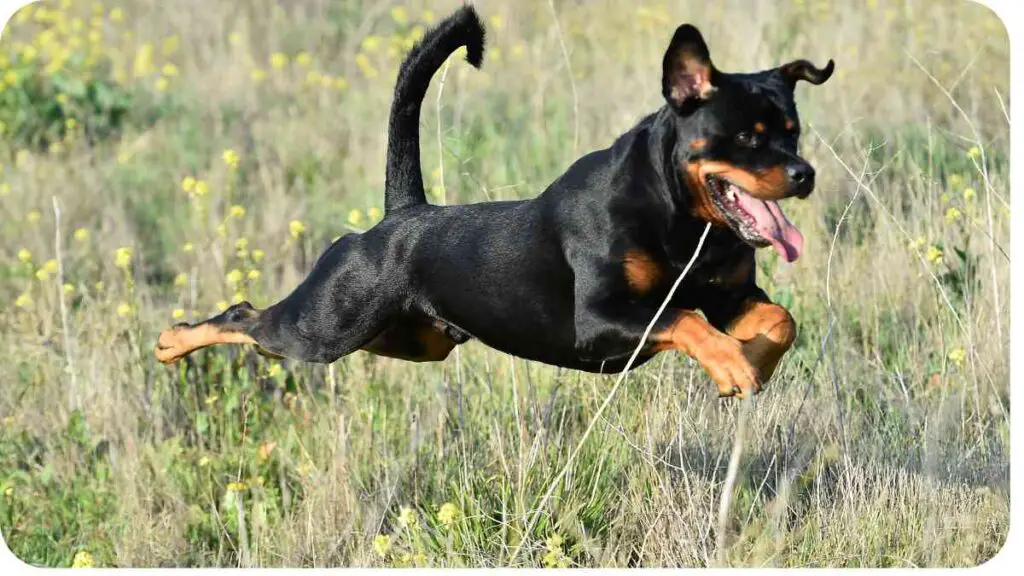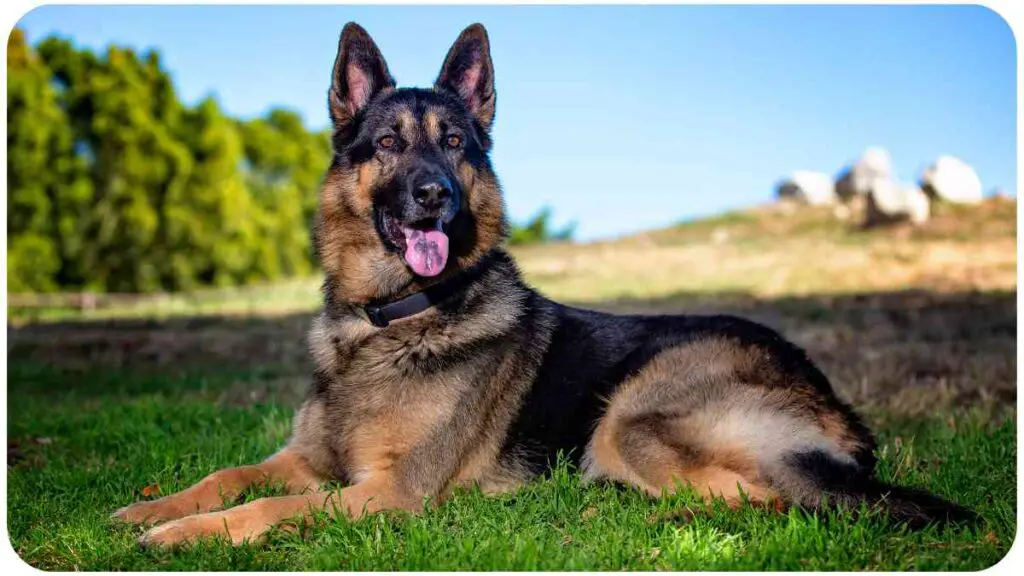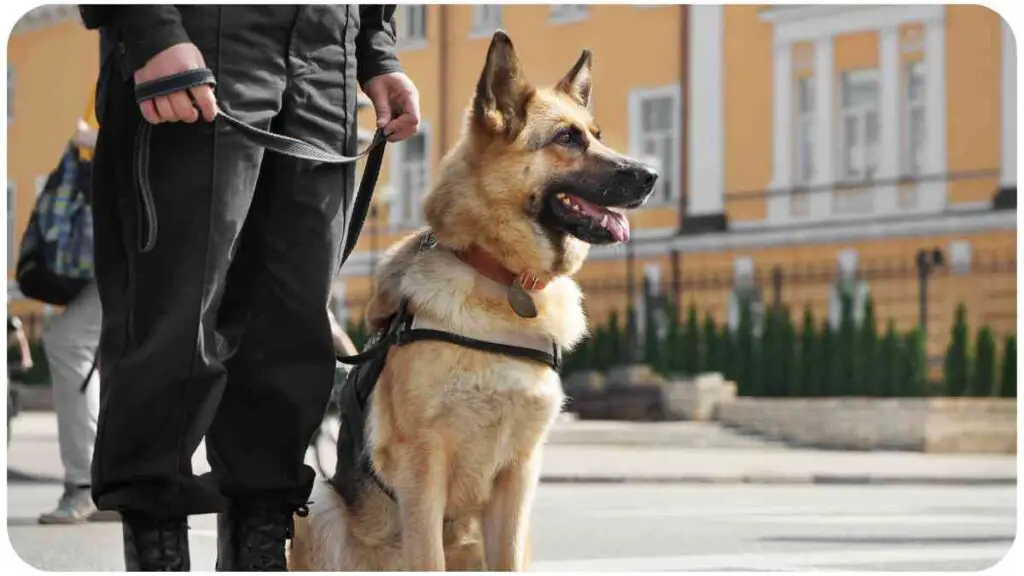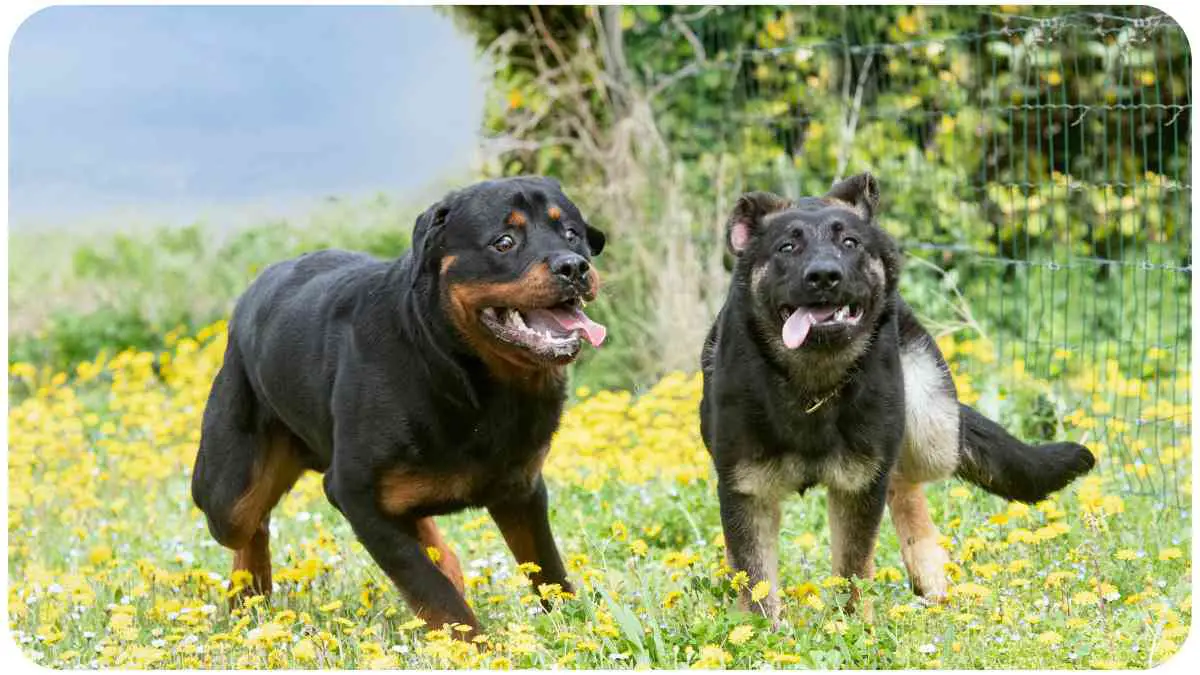Choosing a canine companion is an important decision that can significantly impact your life. Rottweilers and German Shepherds are two popular breeds known for their loyalty, intelligence, and versatility. In this comprehensive guide, we’ll delve into the similarities and differences between these breeds to help you determine which one is the perfect fit for your lifestyle and preferences.
| Takeaways |
|---|
| 1. Consider your lifestyle and preferences when choosing between Rottweilers and German Shepherds. |
| 2. Both breeds have distinct characteristics and requirements, so research thoroughly before making a decision. |
| 3. Training and socialization are crucial for both breeds to thrive as well-behaved and balanced companions. |
| 4. Regular exercise, mental stimulation, and proper grooming are essential for the health and well-being of Rottweilers and German Shepherds. |
| 5. Be aware of breed-specific regulations and restrictions in your area before bringing home a Rottweiler or German Shepherd. |
History and Origins
Understanding the history and origins of Rottweilers and German Shepherds provides valuable insight into their characteristics and behaviors.
Understanding the differences between Boerboels and Rottweilers can help you make an informed decision on which breed suits your lifestyle best” Comprehensive Guide offers insights into these two remarkable breeds’ characteristics and traits.
Rottweiler

| Characteristic | Description |
|---|---|
| Origin | Ancient Rome, used as cattle drovers and guardians |
| Heritage | Descendants of Roman drover dogs |
| Development | Evolved in the town of Rottweil, Germany |
German Shepherd
| Characteristic | Description |
|---|---|
| Origin | Developed in Germany in the late 19th century |
| Heritage | Bred for herding and guarding purposes |
| Development | Created by Captain Max von Stephanitz |
Rottweilers and German Shepherds have rich histories rooted in their roles as working dogs, with both breeds demonstrating traits of loyalty, intelligence, and athleticism.
Discover the charming personality of the Beagle Poodle Mix, a delightful blend of intelligence and playfulness, making it an ideal companion for active families” Clever and Cuddly showcases the endearing qualities of this popular hybrid breed.
Physical Characteristics
When considering the physical characteristics of Rottweilers and German Shepherds, several factors come into play, including size, build, and coat type.
Size and Build
| Characteristic | Rottweiler | German Shepherd |
|---|---|---|
| Height | 22-27 inches (male), 22-25 inches (female) | 24-26 inches (male), 22-24 inches (female) |
| Weight | 95-135 pounds (male), 80-100 pounds (female) | 65-90 pounds (male), 50-70 pounds (female) |
| Build | Solid and muscular | Athletic and agile |
Rottweilers typically have a more robust and stocky build compared to the sleeker, more agile frame of German Shepherds.
Coat and Colors
| Characteristic | Rottweiler | German Shepherd |
|---|---|---|
| Coat Type | Short, dense, and straight | Medium-length double coat, dense and weather-resistant |
| Colors | Black with rust or mahogany markings | Various colors including black and tan, sable, and all black |
While both breeds have double coats, Rottweilers tend to have shorter coats that require less maintenance compared to the longer, thicker fur of German Shepherds.
Temperament and Personality Traits
Understanding the temperament and personality traits of Rottweilers and German Shepherds is crucial for prospective owners to ensure compatibility with their lifestyle and preferences.
Prepare for the unique temperament of Rottweilers with insights from experienced owners and experts, ensuring a harmonious relationship with your beloved Rottie” Rottie Temperament provides valuable guidance on understanding and managing the behavior of these powerful yet loyal dogs.
Trainability
| Characteristic | Rottweiler | German Shepherd |
|---|---|---|
| Trainability | Intelligent and eager to please | Highly trainable and responsive to commands |
| Temperament | Confident, alert, and self-assured | Loyal, courageous, and adaptable |
Both breeds are known for their intelligence and trainability, making them suitable candidates for various activities such as obedience training, agility, and even therapy work.
Guarding Instincts
| Characteristic | Rottweiler | German Shepherd |
|---|---|---|
| Guarding Instincts | Natural guardians and protectors | Protective of their family and territory |
| Behavior | Aloof with strangers, but affectionate with family | Watchful, yet approachable |
Rottweilers and German Shepherds exhibit strong guarding instincts, making them excellent choices for individuals seeking a protective and loyal companion.
Now let’s delve into the exercise and activity needs of these breeds.
Exercise and Activity Needs
Both Rottweilers and German Shepherds are active breeds that require regular exercise and mental stimulation to thrive.
Daily Exercise Requirements
| Characteristic | Rottweiler | German Shepherd |
|---|---|---|
| Exercise Needs | High | High |
| Recommended | 60-90 minutes of physical activity per day | 60-90 minutes of vigorous exercise per day |
Regular exercise is essential for maintaining the physical health and mental well-being of both Rottweilers and German Shepherds. Daily walks, play sessions, and interactive games are excellent ways to fulfill their exercise needs.
Explore the energetic and affectionate nature of the Australian Shepherd Golden Retriever mix, a delightful companion for active individuals and families seeking a playful pet” Energetic Hybrid introduces you to the wonderful world of this lively crossbreed.
Mental Stimulation
| Characteristic | Rottweiler | German Shepherd |
|---|---|---|
| Mental Stimulation | Required | Required |
| Activities | Training sessions, puzzle toys, scent work | Obedience training, agility, interactive games |
Engaging in activities that challenge their minds is crucial for preventing boredom and destructive behaviors in both breeds. Training sessions, interactive toys, and scent work provide mental stimulation and strengthen the bond between owners and their dogs.
Grooming and Maintenance

Understanding the grooming and maintenance requirements of Rottweilers and German Shepherds is essential for ensuring their overall health and well-being.
Shedding and Coat Care
| Characteristic | Rottweiler | German Shepherd |
|---|---|---|
| Shedding | Moderate to heavy shedding throughout the year | Heavy shedding, especially during seasonal changes |
| Coat Care | Regular brushing to remove loose hair and debris | Weekly brushing to prevent mats and tangles |
Both breeds shed year-round, with German Shepherds typically experiencing heavier shedding during seasonal changes. Regular grooming, including brushing and occasional baths, helps minimize shedding and keeps their coats healthy and shiny.
Gain essential knowledge and practical tips for raising a happy and healthy Rottweiler puppy, ensuring a smooth transition into your family’s life together” Raising a Rottie equips you with the necessary tools and resources to nurture your Rottweiler pup into a well-adjusted adult dog.
Dental Health
| Characteristic | Rottweiler | German Shepherd |
|---|---|---|
| Dental Care | Regular brushing and dental chews | Regular brushing and dental check-ups |
Maintaining good dental hygiene is important for both breeds to prevent dental problems such as tartar buildup, gum disease, and bad breath. Regular brushing and providing dental chews or treats help keep their teeth clean and healthy.
Health Considerations
While both Rottweilers and German Shepherds are generally healthy breeds, they are prone to certain health issues that prospective owners should be aware of.
Common Health Issues
| Characteristic | Rottweiler | German Shepherd |
|---|---|---|
| Hip Dysplasia | Common | Common |
| Elbow Dysplasia | Common | Common |
| Bloat | Susceptible | Susceptible |
| Osteochondrosis | Occasional | Occasional |
| Degenerative Myelopathy | Susceptible | Susceptible |
Both breeds are predisposed to hip and elbow dysplasia, which are developmental conditions affecting the joints. Additionally, they are prone to bloat, a life-threatening condition characterized by the stomach twisting and trapping gas.
Lifespan
| Characteristic | Rottweiler | German Shepherd |
|---|---|---|
| Lifespan | 8-10 years | 9-13 years |
Rottweilers have a slightly shorter lifespan compared to German Shepherds, with proper care and regular veterinary check-ups being essential for maximizing their longevity.
Suitability for Families
When it comes to choosing a family pet, factors such as interaction with children and compatibility with other pets play a crucial role.
Interaction with Children
| Characteristic | Rottweiler | German Shepherd |
|---|---|---|
| Compatibility | Good | Good |
| Behavior | Affectionate and protective | Gentle and patient |
Both Rottweilers and German Shepherds can be excellent companions for children when properly socialized and trained from a young age. They are known for their loyalty and protective nature, making them ideal family pets.
Compatibility with Other Pets
| Characteristic | Rottweiler | German Shepherd |
|---|---|---|
| Compatibility | Variable | Variable |
| Socialization | Early socialization is crucial | Early socialization is crucial |
While Rottweilers and German Shepherds can coexist with other pets, early socialization and proper introductions are key to fostering positive relationships. Supervision is recommended, especially during the initial stages of interaction.
Training and Socialization

Training and socialization are vital aspects of raising both Rottweilers and German Shepherds to become well-behaved and balanced companions.
Obedience Training
| Characteristic | Rottweiler | German Shepherd |
|---|---|---|
| Training Needs | Firm and consistent | Firm and consistent |
| Leadership | Respond well to confident and assertive leadership | Thrive with clear boundaries and positive reinforcement |
Both breeds respond positively to obedience training when approached with patience, consistency, and positive reinforcement techniques. Establishing leadership and providing clear guidelines are essential for fostering mutual respect and trust.
Socialization Needs
| Characteristic | Rottweiler | German Shepherd |
|---|---|---|
| Socialization | Early and ongoing socialization | Early and ongoing socialization |
| Exposure | Expose to various people, animals, and environments | Expose to diverse experiences and stimuli |
Early and ongoing socialization is crucial for both Rottweilers and German Shepherds to develop good manners and adaptability in different situations. Positive experiences with people, animals, and environments help prevent behavioral issues and build confidence.
Living Environment
Creating a suitable living environment is essential for meeting the needs of both Rottweilers and German Shepherds.
Space Requirements
| Characteristic | Rottweiler | German Shepherd |
|---|---|---|
| Living Space | Prefer spacious indoor and outdoor areas | Require ample space to move and play |
| Housing | Suitable for suburban or rural environments | Adaptable to urban or rural settings |
Both breeds benefit from having access to a secure yard where they can exercise and explore. However, they can adapt to various living environments as long as their exercise and mental stimulation needs are met.
Climate Considerations
| Characteristic | Rottweiler | German Shepherd |
|---|---|---|
| Climate Tolerance | Thrive in moderate climates | Can tolerate a range of climates, including cold weather |
| Heat Sensitivity | Moderate | Moderate |
While Rottweilers and German Shepherds can adapt to different climates, they may be sensitive to extreme temperatures. Providing adequate shelter and monitoring their exposure to heat or cold weather is important for their well-being.
Breed-Specific Regulations
Before bringing home a Rottweiler or German Shepherd, it’s essential to be aware of any breed-specific regulations or restrictions in your area.
Legal Restrictions
| Characteristic | Rottweiler | German Shepherd |
|---|---|---|
| Breed Bans | Subject to breed-specific legislation in some areas | Subject to breed-specific legislation in some areas |
| Insurance | Some insurance companies may have breed restrictions | Some insurance companies may have breed restrictions |
Certain jurisdictions may impose restrictions or requirements for owning Rottweilers or German Shepherds, such as mandatory licensing, liability insurance, or containment measures. It’s important to familiarize yourself with local regulations to ensure compliance and responsible ownership.
Cost of Ownership
Owning a Rottweiler or German Shepherd involves various expenses beyond the initial purchase price.
Initial Purchase Price
| Characteristic | Rottweiler | German Shepherd |
|---|---|---|
| Cost | $1,000 – $3,000 | $800 – $2,500 |
| Factors | Pedigree, lineage, and breeder reputation | Pedigree, lineage, and breeder reputation |
The cost of purchasing a Rottweiler or German Shepherd can vary depending on factors such as pedigree, lineage, and breeder reputation. It’s essential to research reputable breeders and consider the long-term commitment before making a decision.
Ongoing Expenses
| Characteristic | Rottweiler | German Shepherd |
|---|---|---|
| Expenses | Food, veterinary care, grooming, training, and supplies | Food, veterinary care, grooming, training, and supplies |
| Annual Cost | $1,000 – $2,500 | $800 – $1,500 |
In addition to the initial purchase price, owners should budget for ongoing expenses such as food, veterinary care, grooming, training, and supplies. Providing quality care and meeting their needs contribute to the health and happiness of both Rottweilers and German Shepherds.
Famous Examples and Pop Culture References
Both Rottweilers and German Shepherds have made their mark in pop culture and history, showcasing their intelligence, loyalty, and versatility.
Notable Rottweilers
- Balou: The Rottweiler starred in the movie “Hooch” alongside Tom Hanks.
- Greta: A Rottweiler known for her role in the TV series “Brooklyn Nine-Nine” as Captain Holt’s loyal companion.
Famous German Shepherds
- Rin Tin Tin: A German Shepherd rescued from a World War I battlefield, he became a Hollywood star and symbol of loyalty.
- Strongheart: Another German Shepherd actor who paved the way for Rin Tin Tin in silent films.
These famous examples highlight the remarkable qualities of Rottweilers and German Shepherds and their enduring legacy in popular culture.
Conclusion
In conclusion, both Rottweilers and German Shepherds are exceptional breeds with unique characteristics and qualities. Whether you’re drawn to the Rottweiler’s strength and loyalty or the German Shepherd’s intelligence and versatility, choosing the right breed requires careful consideration of your lifestyle, preferences, and commitment to responsible ownership.
By understanding the distinct traits, needs, and considerations associated with each breed, you can make an informed decision that will enrich your life and the life of your canine companion.
Further Reading
Here are some additional resources for further reading on the comparison between Rottweilers and German Shepherds:
- Dogster: Rottweiler vs German Shepherd
- Dogster provides an in-depth comparison between Rottweilers and German Shepherds, covering various aspects such as temperament, health, and care requirements.
- Chewy: Rottweiler vs German Shepherd
- Chewy offers a comprehensive comparison tool for Rottweilers and German Shepherds, allowing readers to explore the differences and similarities between the two breeds.
- GermanShepherds.com: German Shepherds vs Rottweilers
- This forum thread on GermanShepherds.com provides insights and opinions from owners and enthusiasts of both breeds, offering valuable perspectives on their characteristics and suitability as pets.
FAQs
Are Rottweilers or German Shepherds better for families?
Both Rottweilers and German Shepherds can be excellent family pets when properly trained and socialized. They are known for their loyalty and protective instincts, making them great companions for families.
Do Rottweilers and German Shepherds get along with children?
Yes, both breeds can get along well with children when raised together and taught how to interact safely and respectfully. However, supervision is always recommended, especially with young children.
Are Rottweilers or German Shepherds easier to train?
German Shepherds are often considered more trainable and responsive to commands due to their high intelligence and willingness to please. However, with proper training techniques and consistency, Rottweilers can also excel in obedience training.
Do Rottweilers or German Shepherds shed a lot?
Both breeds are moderate to heavy shedders, especially during seasonal changes. Regular grooming, including brushing and occasional baths, can help minimize shedding and keep their coats healthy.
Are Rottweilers or German Shepherds prone to health issues?
Both Rottweilers and German Shepherds are susceptible to certain health issues, including hip dysplasia, elbow dysplasia, and bloat. Responsible breeding practices, regular veterinary check-ups, and maintaining a healthy lifestyle can help mitigate these risks.

I’m Dr. Hellen James, I’ve spent my career working with dogs, and I’ve seen first-hand how important it is to understand the individual needs of each breed. I want to share my knowledge of dog breeds with you so that you can make informed decisions about which dog will be best for your household and lifestyle.

